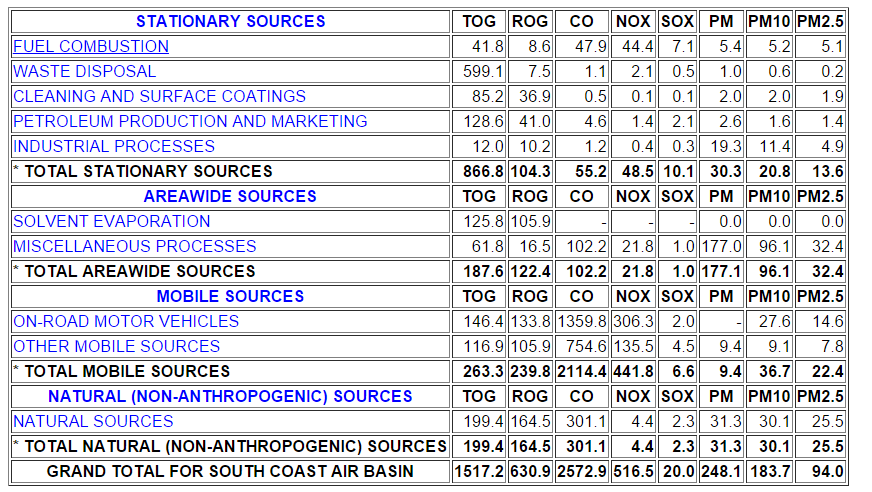Sources of Air Pollution in So. Cal.
The air pollution in California comes from the following air pollution sources: Mobile sources- all on-road vehicles such as automobiles and trucks; off-road vehicles such as trains, ships, aircrafts, and agricultural equipment.
- Mobile sources- all on-road vehicles such as automobiles and trucks; off-road vehicles such as trains, ships, aircrafts, and agricultural equipment.
- Stationary sources -There are approximately 13,000 individual facilities, which are called point sources. Point sources are fixed pollution sources such as electric power plants and refineries. There are also about 135 aggregated point source categories. These categories estimate emissions for the non-point source stationary sources.
- Area-wide sources- There are approximately 80 source categories. An area-wide source category is made up of sources of pollution mainly linked to the human activity. Examples of these sources include consumer products and architectural coatings used in the region.

Common air pollutants in California
Carbon Monoxide (CO)
- Fuel combustion from vehicles and engines.
- Inhaling CO reduces the amount of oxygen reaching the body;s organs and tissues, aggravates heart disease, and produces chest pain and other symptoms.
Ground-level Ozone (O3)
- Secondary pollutant formed by chemical reaction of volatile organic compounds (VOCs) and NOx in the presence of sunlight.
- Decreases lung function and causes respiratory symptoms, such as coughing and shortness of breath, and also worsen asthma and other lung diseases.
Lead (Pb)
- Produce from smelters (metal refineries) and other metal industries, combustion of leaded gasoline in piston engine aircrafts, waste incinerators (waste burners), and battery manufacturing.
- Damage the developing nervous system, resulting in IQ loss and impacts on learning, memory, and behavior in children. Cardiovascular and renal effects in adults and early effects related to anaemia.